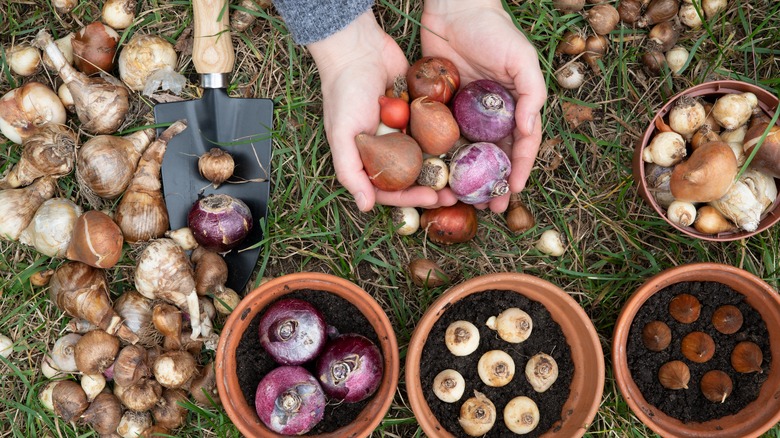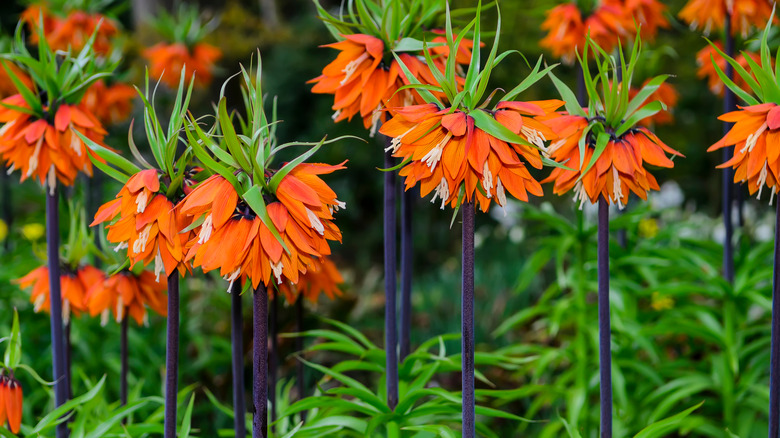The Underutilized Spring Bulb You'll Want To Add To Your Garden
If you are looking for a bold and striking spring-blooming bulb that does double duty as a pest repellant, try crown imperial (Fritillaria imperialis). This tropical-looking perennial comes back year after year and is an easy-to-grow plant. The plant itself is a low-growing rosette of green leaves that grow about 1 foot wide. The cheerful yellow, orange, or red flowers bloom on stalks 3 to 4 feet high. Bell-shaped flowers top the stalks and bloom for weeks from April through June. It is a plant that keeps deer away and repels rabbits and other pests. And while it is fragrant, the musky smell is not for everyone.
Plants with strong odors tend to discourage animals that do damage in the garden. This may be the crown imperial's best attribute. The strong scent and the fact that it is toxic when eaten leave little for rabbits and deer to be attracted to. Highly scented plants in the garden can also deter pests from nearby plants, as well.
How to grow crown imperial
If you want to plant this pretty bulb, make sure to plant it in the fall for spring bloom. Dig a hole 6 inches deep and plant the bulb on its side. The bulb has a natural depression on top that tends to trap water, so crown imperial tends to suffer from bulb rot if not planted properly. Be sure only to give this plant additional water in the spring when it is blooming. Bulb rot can also set in if the plant has wet feet. Once it is established, it is a drought-resistant plant, so there is no need to overwater.
Crown imperial loves full sun but will also grow in woodland gardens and partial sun. It prefers well-drained soil but can adapt to most soil types, from acidic to alkaline. Fertilizing bulbs in early spring is important for keeping the plant healthy and vigorous. And if you want to help the plant store more energy for next year's flowers, fertilize it again after all flowering is done. This bulb overwinters in all but the coldest climates.

